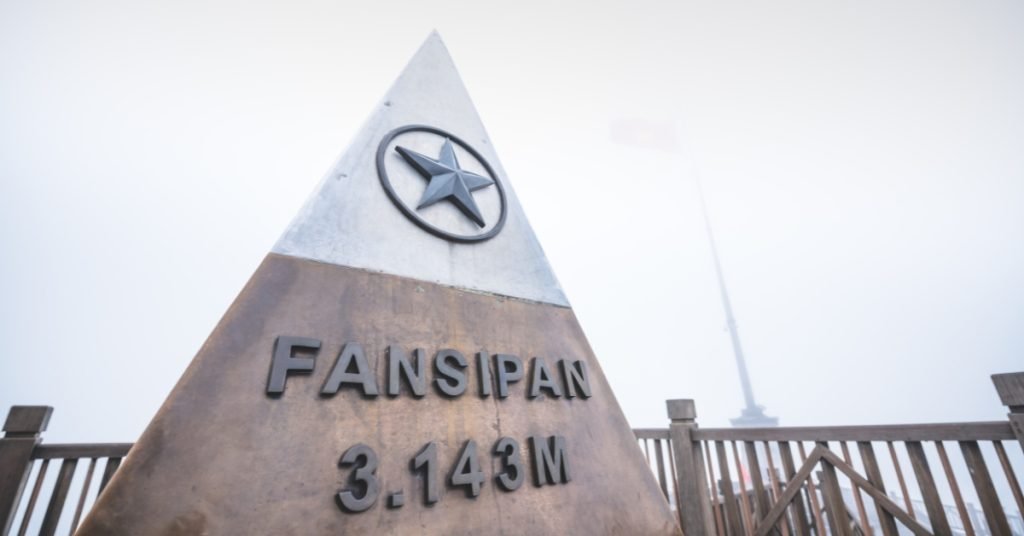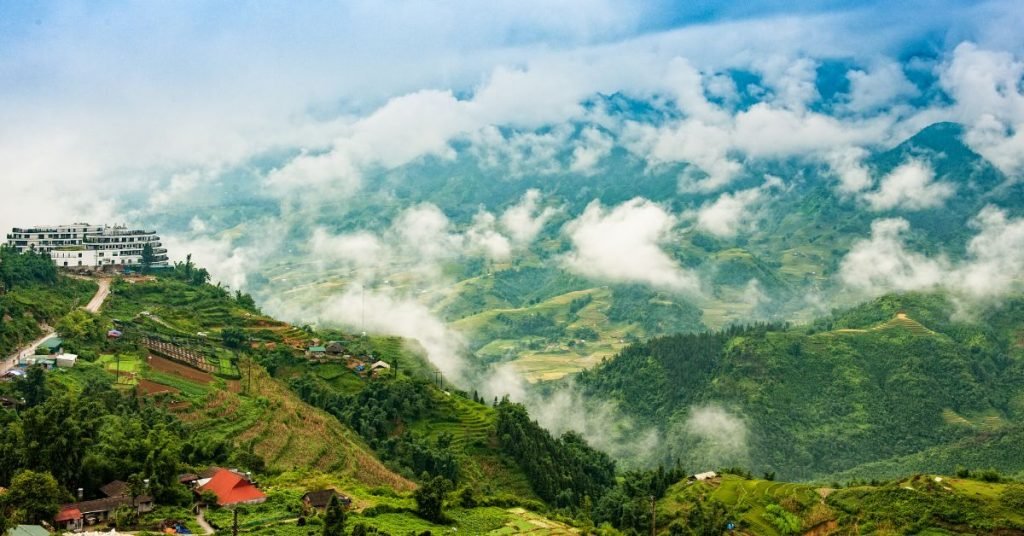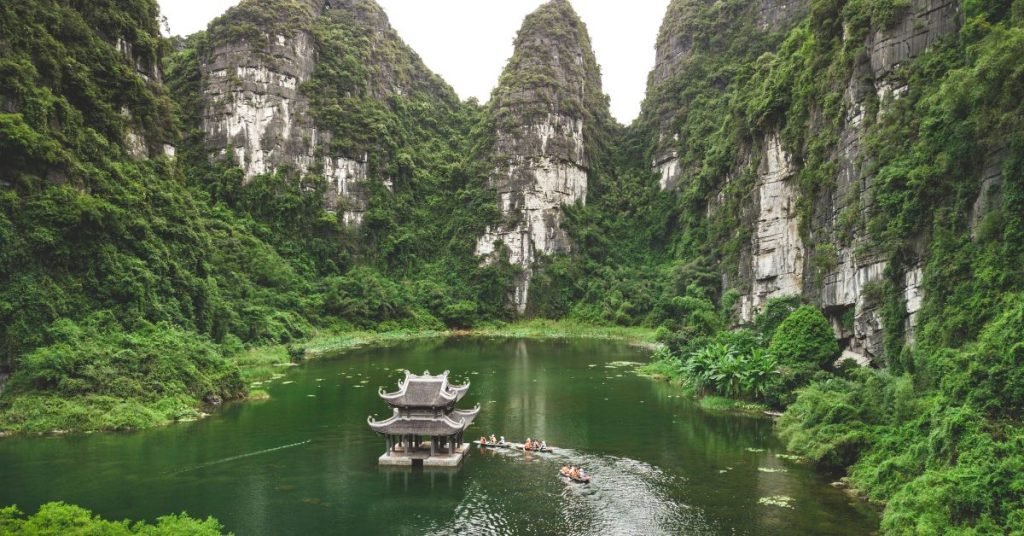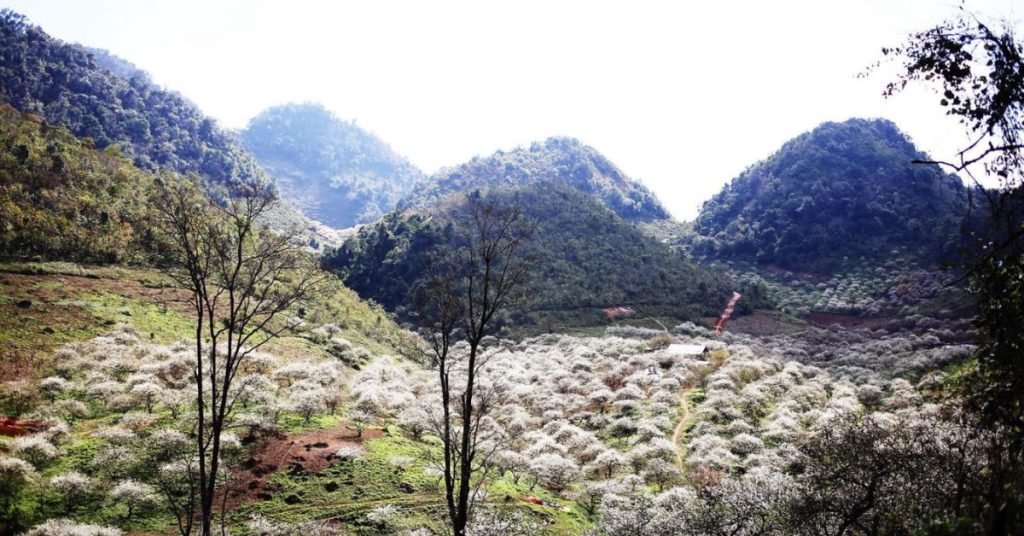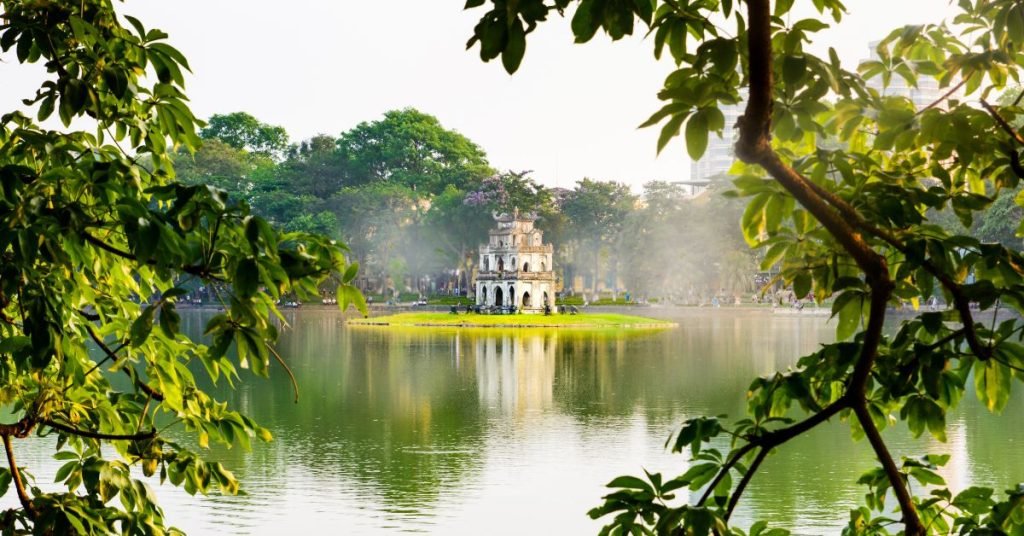The Highland Retreat
Sapa, nestled in the Hoàng Liên Son mountains of northern Vietnam, is a picturesque town known for its terraced rice fields, ethnic diversity, and rugged scenery. It’s a place where nature meets culture; mist-covered hills and rich green valleys provide a backdrop to colorful traditional attire and the languages of Vietnam’s ethnic minorities.
Best Time to Visit
Visiting Sapa is most rewarding during the fall, from August to December, when the weather is stable, cool, and dry, offering clear views of the spectacular landscapes. The rice terraces are at their most beautiful in September when they turn golden-yellow just before harvest. The spring months of February to April also offer pleasant weather, with blooming flowers and green pastures, though it’s often misty and chilly.
Top Attractions
- Fansipan (Phan Xi Păng) : Known as the “Roof of Indochina”, Fansipan can be reached by a challenging trek or a cable car ride.
- Muong Hoa Valley (Thung Lũng Mường Hoa): Home to ancient rock carvings and the H’mong villages, set against the backdrop of picturesque rice terraces.
- Ta Phin, Ta Van Village (Làng Tả Phìn, Tả Van): Experience the rich culture of the Red Dzao people and explore their famous brocade market.
- Sapa Market (Chợ Sapa): A vibrant market where local produce and handicrafts are on full display.
- Silver Waterfall and Love Waterfall (Thác Bạc, Thác Tình Yêu): Two of the most beautiful waterfalls in the region, offering a scenic trek and refreshing mist.
Getting Around
In Sapa, the center of the town is quite walkable, but many of the attractions are located in the surrounding hills. Renting a motorbike for around $5-$15 per day is a popular option for those comfortable with navigating mountain roads. Alternatively, taxis and local guides are available for day trips, and trekking with a guide is a common choice for visitors looking to explore the rural landscapes and villages.
Travel Tips for Sa pa Adventure
- Lodging: Sapa offers a variety of lodging options, from cozy homestays in local villages to luxury hotels with mountain views. Prices range from $10 to over $100 per night, depending on the level of comfort desired.
- Dining: Sapa’s cuisine reflects its cultural diversity, with opportunities to sample traditional H’mong and Tay dishes for about $2-$5. Mid-range restaurants can cost around $10-$15 for a meal with a view.
- Cultural Courtesy: When visiting ethnic villages, it’s important to show respect for local traditions and privacy. Small gifts or purchases from local artisans are appreciated.
- Hiking Essentials: Pack appropriate gear, as weather can be unpredictable. Guided treks range from half-day walks to longer multi-day journeys.
- Crafts and Textiles: Sapa is famous for its hand-woven textiles and intricate embroidery. Small items like handmade bags can cost a few dollars, while larger, more elaborate pieces such as traditional clothing may be priced higher.
Discover Nearby Destinations
Northern Highlands
Explore the rich landscapes and cultural tapestry of Vietnam’s northeastern and northwestern regions. This guide…
Ninh Binh
The ‘Halong Bay on Land’ Ninh Binh province, located to the south of Hanoi, offers…
Mộc Châu
Highlands of Northwest Vietnam Mộc Châu is a mesmerizing plateau in Son La province, renowned…
Ha Noi
The Capital Hanoi, Vietnam’s capital, is a fascinating blend of East and West, combining traditional…


